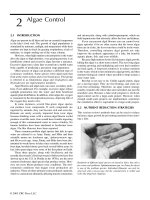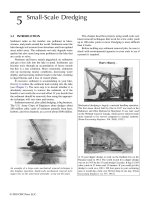Business and society ethics sustainability and stakeholder management 9e chapter 16
Bạn đang xem bản rút gọn của tài liệu. Xem và tải ngay bản đầy đủ của tài liệu tại đây (1.54 MB, 26 trang )
© 2015 Cengage Learning
1
Chapter 16
Business and
Community
Stakeholders
© 2015 Cengage Learning
2
Learning Outcomes
1. Identify and discuss two basic ways of business giving.
2. Discuss reasons for community involvement, various types
of community projects, and management of community
stakeholders.
3. Explain the pros and cons of corporate philanthropy, provide
a brief history of corporate philanthropy, and explain why
and to whom companies give.
4. Differentiate between strategic philanthropy, cause-related
marketing, and cause branding.
5. Characterize the nature of offshoring and the movement
toward reshoring.
6. Address steps that a business or plant might take before a
decision to close is made.
7. Identify strategies that a business or plant might employ
after a decision to close has been made.
© 2015 Cengage Learning
3
Chapter Outline
• Community Involvement
• Corporate Philanthropy or Business Giving
• The Loss of Jobs
• Summary
• Key Terms
© 2015 Cengage Learning
4
Business and
Community Stakeholders
•
•
•
•
The actions of a business affect a range of
communities. Managers must be aware of these
impacts, and manage in a way that respects
community stakeholders.
We focus on the immediate locale, but instant
communication means that the relevant community
includes the region, nation, or the world.
For business and community stakeholders, there
are two major kinds of relationships:
• The positive contributions business can make to
the community.
• The harm business can cause to community
stakeholders.
We discuss here community involvement and
corporate philanthropy
© 2015 Cengage Learning
5
Community Involvement
•
Business involvement in the community
represents enlightened self-interest, because
businesses help themselves in the process of
helping others.
Volunteer Programs - such programs reflect the
resourcefulness and responsiveness to
communities, and are essential for attracting
and retaining the best talent in the workforce.
Employees want to work for the “good guys.”
Managing Community Involvement – focuses on
the contribution of managerial and employee
time and talent.
© 2015 Cengage Learning
6
Standards of Excellence
in Corporate Community Involvement
1. Leadership
2. Issues Management
3. Relationship Building
4. Strategy
5. Accountability
6. Infrastructure
7. Measurement
© 2015 Cengage Learning
7
Benefits of Employee Volunteerism
© 2015 Cengage Learning
8
Developing a Community Action Plan
1. Knowing the community.
2. Assess the company’s resources.
3. Select projects to support; match
community needs to company resources.
4. Monitor performance of the community
actions program and make adjustments.
© 2015 Cengage Learning
9
Corporate Community Involvement
© 2015 Cengage Learning
10
Corporate Philanthropy
or Business Giving
Philanthropy a desire to help mankind as indicated
by acts of charity; love of mankind.
Corporate Philanthropy - Business giving, the
motive for which can be difficult to assess.
A Brief History of Corporate Philanthropy –
•Community chest efforts dominated early giving
•Since 1960, giving has grown to address a variety
of initiatives
•Now, the watchword is “strategic philanthropy”
which benefits both society and the business.
© 2015 Cengage Learning
11
A Call for Transparency
•
•
Companies need not disclose direct donations
to charities, but proposed legislation would
require disclosure.
•
Proponents say the money belongs to the
shareholders, and they should make the decision,
not managers giving to their favorite charities,
which would not benefit the business
•
Some fear that disclosure would result in fewer
donations, and would reveal company strategy.
Non-disclosure has led to a rise in “dark
money” political funding to nonprofits from
undisclosed sources.
© 2015 Cengage Learning
12
Giving to the Third Sector: Nonprofits
Business and government – are supported by
profits and taxes
The third sector – (churches, museums,
hospitals, libraries, colleges, and more)
depends on philanthropy.
Why do companies give?
•Charitable – (no expected benefit for the
business)
•Community - (gifts support business goals)
•Commercial – (giving that benefits the business)
© 2015 Cengage Learning
13
To Whom Do Companies Give?
• During any budget year, firms receive
numerous requests for contributions from a
variety of applicants, and decide which to
honor.
Estimates of most business giving -
1. Health and human services
2. Education
3. Civic and community activities
4. Culture and the arts
© 2015 Cengage Learning
14
Managing Corporate Philanthropy- 1 of
2
•
•
Two aspects to the pressure on businesses
to be more businesslike in their
philanthropy:
•
Base giving on business skills, resources, and
capabilities to enhance philanthropic
outcomes.
•
Focus on philanthropy that will enhance
corporate profitability and also make a
difference in the community (a strategic
approach).
Strategic giving is on the rise.
© 2015 Cengage Learning
15
Managing Corporate Philanthropy- 2 of
2
•
•
•
•
•
Factor Conditions – the available inputs for
production
Demand Conditions – concerned with the nature
of the company’s customer and the local market
Related and Supporting Industries – can also be
strengthened through strategic giving
Cause-Related Marketing – a direct linking of a
firm’s product or service to a specified charity;
each time a consumer buys the product, a
donation is given to the charity by the business
(is this really philanthropy?)
Global Philanthropy – depends on the size of the
firm’s workforce in international markets
© 2015 Cengage Learning
16
The Loss of Jobs
• A negative consequence of a firm's actions;
has a detrimental impact on the community.
From Offshoring to Reshoring –
• Offshoring - The relocation of business
processes to a different country.
•
Affects blue collar and white collar workers.
•
Even skilled high-tech jobs are offshored.
• Reshoring – returning of business processes
to their original location; the costs often
outweighed the benefits.
© 2015 Cengage Learning
17
Business and Plant Closings (1 of 2)
• Business and plant closings have detrimental
impact in the community.
• What rights and responsibilities does
business have in relation to employee and
community stakeholders? Consider:
• Before the Decision to Close is Made –
•
Is this the only option?
•
Diversification
•
New ownership or employee ownership
© 2015 Cengage Learning
18
Business and Plant Closings (2 of 2)
• After the Decision to Close is Made –
•
Community-Impact Analysis
•
Transfer, Relocation, and Outplacement
Benefits
•
Gradual Phase-Outs
•
Helping to Attract Replacement Industry
• Survivors: The Forgotten Stakeholders,
need•
Emotional support
•
Directional support
•
Tactical support
•
© 2015 Cengage Learning
Informational support
19
2-Business and Plant Closings
Diversification
Before Deciding
to Close
New ownership
New owner
Employee ownership
© 2015 Cengage Learning
20
3-Business and Plant Closings (continued)
Conduct a community impact analysis
Provide advance notice to employees/
community
After Deciding
to Close
Provide transfer, relocation, and
outplacement benefits
Phase out the business gradually
Help attract replacement industry
© 2015 Cengage Learning
21
?Community Impact Analysis
© 2015 Cengage Learning
22
WARN? Advance Notice
Worker Adjustment and Retraining
Notification Act (WARN)
•Requires firms with 100 or more workers to
provide 60 days advance notice before
shutting down or conducting layoffs.
•The recent global economic crisis has
prompted some states to strengthen WARN
protections.
•WARN often falls short of its goals of
protecting workers.
© 2015 Cengage Learning
23
? Communicating With Employees
Who are Being Laid Off
Be complete
Be consistent
Inform affected employees first
Inform retained employees
© 2015 Cengage Learning
24
?Survivors– The Forgotten
Stakeholders
© 2015 Cengage Learning
25









